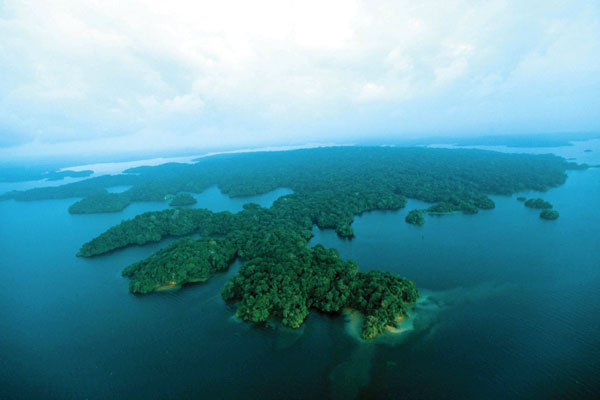RIO DE JANEIRO, BRAZIL – Barro Colorado, an island formed by the construction of the Panama Canal and the artificial Gatun Lake that feeds it, has lost about a quarter of its bird species in a century despite being protected from human disturbance, the Smithsonian Tropical Research Institute said Thursday.
This situation stems from a combination of factors that has slowly transformed Barro Colorado’s bird community into one that resembles that of the region’s driest and most disturbed forests, the organization said in a statement.

“Uniquely, the Barro Colorado bird community has been documented by ornithologists for 90 years. When studies began in the early 20th century, about 228 bird species could be found on the island,” said Smithsonian visiting scientist Douglas Robinson.
Robinson is part of the research team that explored the reasons why Barro Colorado “has lost biodiversity, approximately a quarter of its bird species”.
The scientific body explained that Barro Colorado, with an area of 15 square kilometers, was never a regular island: it was a fragment of forest on top of a hill that had been isolated by the creation of an artificial lake, which had some advantages for biodiversity conservation, such as resistance to exotic invaders and protection from human disturbances.
But on the other hand, after isolation from the continental forest, some of the island’s birds began to experience new challenges, such as those associated with humid and rainy forests, since Barro Colorado has no permanent streams or water sources and is exposed to the winds that lash Lake Gatun, which makes it drier.
In that context, explained the institute, “the BCI bird community has lost approximately a quarter of its species. Most of them had similar traits: they were sensitive to drought, were not very abundant initially, or had very particular diets”.
In addition, “many landbirds also disappeared, even when they were still abundant in the adjacent continental forests, because they could not fly long distances and could not cross the lake to maintain populations on the island.”
The research team, which described their findings in Scientific Reports, noted that rainfall patterns are also changing, with extreme dry periods becoming more frequent throughout the region.
In the past, these dry periods may have led to increased bird extinction rates, and it is possible “that about 12 more bird species may be lost in the next two decades if climate change patterns remain the same.”
“The proposition that is simply protecting rainforests will maintain their diversity over the long term is less and less supported given recent findings of bird declines in vast intact Amazon forests,” Robinson said.
According to its website, the Smithsonian Tropical Research Institute, a unit of the Smithsonian Institution based in Panama City, promotes an understanding of tropical nature and its importance to human well-being.

